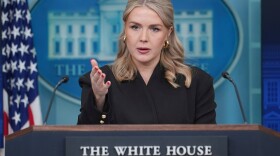Far warmer-than-normal sea surface temperatures are causing hurricane forecasters to raise the number of tropical storms expected in coming months, but it's not motivating the man in charge of Lake Okeechobee's elevated water level to lower it.
The Big Lake’s average depth late last week was 15.31 feet, which is about six inches deeper than last month and 30 inches higher than one year ago.
Hurricane experts from the National Oceanic and Atmospheric Administration have just raised their predictions from 12 to 17 named storms to 14 to 21. They have also increased the likelihood of major hurricanes of Category 3 or higher to as many as five.
“We have increased the chance for above normal activity to 60% from 30%,” said Matthew Rosencrans, lead hurricane forecaster with NOAA’s Climate Prediction Center. “The chances of a below-normal season are now at only 15%.”
Mid-August through mid-October is typically, and roughly, the most active time for hurricanes in the Atlantic basin.
Florida Public Radio Emergency Network meteorologists Jeff George and Megan Boroski stress that it’s important to understand such forecasts cover the hurricane season in its entirety. That means its tally does include the five storms that have already come and gone, but does not indicate when or where more storms will develop or where they will go, if and when the forecasts for more storms are spot-on.
Col. James Booth, the Florida commander for the Army Corps of Engineers, is not planning on drawing down the water level on Lake Okeechobee by increasing the relatively small releases into the Caloosahatchee River.
Booth said Friday he is balancing the danger of elevated lake levels with the dangers to the ecosystem in the Caloosahatchee River of releasing too much freshwater from the lake, which is currently filled with toxic blue-green algae.
“But if we see heavy rains that are driving us hard up, we may change that what we're doing,” Booth said on a phone call with reporters. “I think right now where we are in the season, you know, we're well into what, almost two weeks into August? We’re not in a great place, but we're not as bad as a lot of people would have thought with a heavy hurricane season as it was initially forecast.”

The Army Corps, along with the South Florida Water Management District, decide when to release water from dams on the lake. Oftentimes, the decision is not about when it is most beneficial, but when it’s least harmful to the environment.
“Hurricane season is going into its height and there’s been not much so far,” Booth said. “We're doing okay with our current strategy, and I'm comfortable where we're at, but we're gonna keep watching it."
Booth has confidence in the years-long renovation of the Herbert Hoover Dike around the lake that was just completed, making the whole structure much stronger.
Forecasters from Colorado State University just raised their prediction of hurricane activity as well, similar to NOAA’s in the number of major hurricanes to four. The CSU Tropical Weather and Climate Research Team is now predicting 18 named storms, up from 14 in an earlier forecast.
Comparable “seasons exhibited a wide range of outcomes, from below-normal seasons to hyperactive seasons,” said Phil Klotzbach, a noted hurricane expert from Colorado State. "This highlights the large uncertainty that exists with this outlook.”
Environmental reporting for WGCU is funded in part by VoLo Foundation, a non-profit with a mission to accelerate change and global impact by supporting science-based climate solutions, enhancing education, and improving health.
Sign up for WGCU's monthly environmental newsletter, the Green Flash, today.
WGCU is your trusted source for news and information in Southwest Florida. We are a nonprofit public service, and your support is more critical than ever. Keep public media strong and donate now. Thank you.








